PAKISTAN
Karachi

Karachi
Karachi
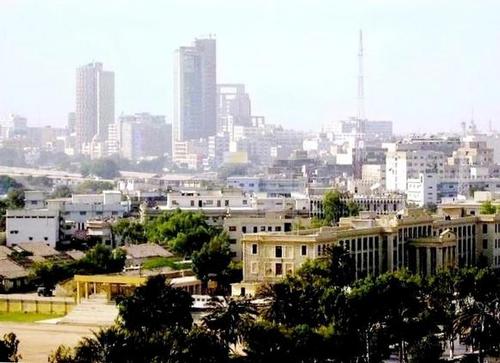 KarachiPhoto: Asjad Jamshed CC 1.0 Generic no changes made
KarachiPhoto: Asjad Jamshed CC 1.0 Generic no changes made
The city of Karachi is located in the province of Sindh in Pakistan. The metropolitan area has a total area of 3,527 km². According to the 2012 census, Karachi has a population of 21,200,000. It is the main seaport and financial centre of Pakistan and the capital of Sindh province. Karachi is very densely populated and the 11th largest urban conurbation in the world. It is the industrial and banking centre of the country, with many large companies in textiles, shipping, automotive, software development and medical research. Karachi is also a well-known educational centre in South Asia. Karachi was the capital of Pakistan before Islamabad became the capital and the largest and busiest port in the country.
| advertisement |
| Hotels Karachi |
Location
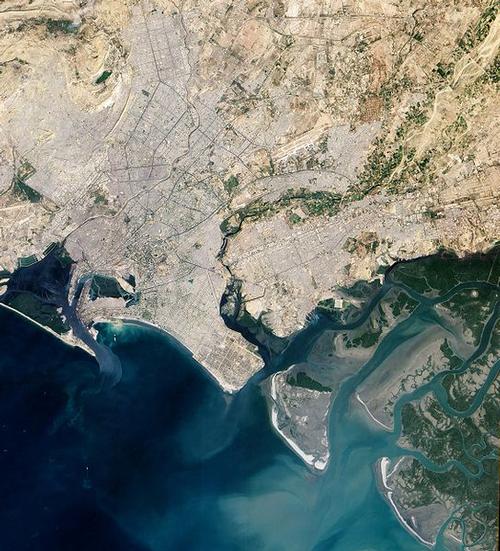 Satellite photo KarachiPhoto: Public Domain
Satellite photo KarachiPhoto: Public Domain
The geographical coordinates of Karachi are 24 ° 51'36' N; 67 ° 02'36' E.
Most of Karachi is flat or rolling, low hills dominating the picture in the western area. The southern coastline of Karachi is lined by the beaches of the Arabian Sea. In the south-eastern part of the city river creeks of the Indus form a picturesque landscape.
Weather
Due to its location by the sea, Karachi has a dry climate with little rainfall (about 250 mm per year). The heaviest rains fall during the monsoon season, in July and August. Winters are mild and dry, while summers are hot and humid. The cool sea breeze refreshes the air during the summer months. The warm pre-monsoon season lasts from March to June. The climate in Karachi is mild compared to other parts of the country. The highest temperature measured in Karachi is 47° C, on June 18, 1979 and the lowest is 0.0° C, on January 21, 1934.
History
The area of Karachi was known to the ancient Greeks as a staging post and port, where Alexander the Great gathered his fleet after his campaign in the Indus Valley. Karachi was founded by the Baloch tribes as a small fishing community. The local Sindhi people built a small fort to protect the city. The name Karachi was first mentioned in a Dutch document in 1742, when the merchant ship "de Ridderkerk" was shipwrecked off the coast. In 1839, the British East India Company occupied the city. The town was later incorporated into the British East Indies.
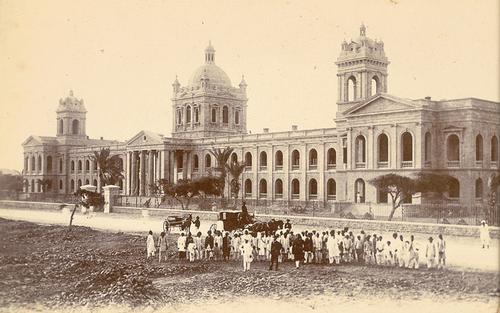 D. J. Government Science College in the 19th centuryPhoto: Public Domain
D. J. Government Science College in the 19th centuryPhoto: Public Domain
Karachi became the capital of Sindhi in the 1840s. The British recognised the importance of the city for military purposes as well as for the export of products from the Indus delta. The entire province along with the city was then incorporated into the Bombay district. The municipal government took shape and the development of infrastructure was undertaken. Due to these developments, the population of the city grew rapidly.
In 1864, a direct telegraph connection was established between Karachi and London. Karachi developed into a bustling city with a number of mosques, temples and palaces. The port became more and more important. In 1876, Muhammad Ali Jinnah, the founder of Pakistan, was born in the city of Karachi. By 1899, Karachi was the largest port for the export of Wheat in the East. The majority of the population in Karachi were the indigenous Sindhis and Baloch. Over time, as a result of British rule, Hindus became the largest population group in the city. With the influx of economic immigrants, the population rose to about 100,000 by the end of the 19th century. The British developed a good infrastructure in the city.
By the time Pakistan gained independence in 1947, Karachi was a metropolis with buildings in European classical and colonial styles and with a population of just under half a million. Karachi was chosen as the capital of Pakistan and populated with thousands of Muslims from India. In 1958, the capital of Pakistan was moved from Karachi to Rawalpindi and then to the newly built Islamabad in 1960.
Nevertheless, the municipal government of Karachi did not sit idle, establishing schools and universities, and providing for the construction of roads, municipal gardens and parks. Today, Karachi has become an important financial, industrial and trading centre and the port with most of the overseas trade from Pakistan and other Asian countries.
Sights
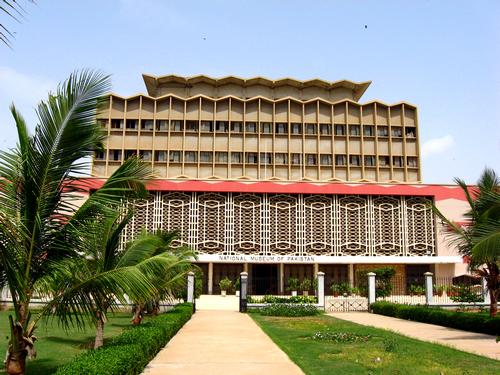 National Museum of Pakistan in KarachiPhoto: Public domain
National Museum of Pakistan in KarachiPhoto: Public domain
Karachi is a famous national and international tourist destination and offers a range of different attractions. The main museum of Karachi is the National Museum of Pakistan. This museum gives an insight into the history of Pakistan. The museum has a large collection of ancient coins and many books about the history of Pakistan. Other famous museums are the aviation museum and the maritime museum.
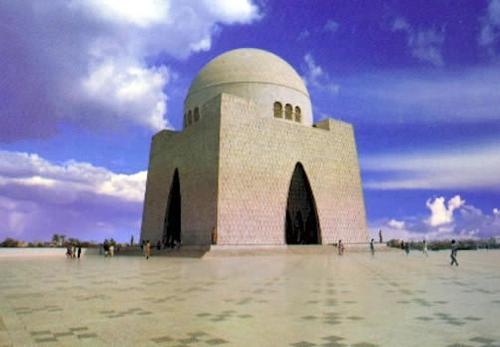 Mazar-e-Quaid KarachiPhoto: Usman Nasir CC 1.0 generickom no changes made
Mazar-e-Quaid KarachiPhoto: Usman Nasir CC 1.0 generickom no changes made
The mausoleum Mazar-e-Quaid was built in honour of Mohammad Ali Jinnah. He was the founder of Pakistan. The Pakistani people call him Quaid-e-Azam' (Great Leader). This masterpiece of white marble was completed in 1960 and is located in the centre of the city on a small hill, surrounded by well-trimmed and lush gardens. It is a calm and peaceful place in the middle of the hectic and noisy city. The graves of his sister and the 1st Prime Minister of Pakistan (Liaqat Ali Khan) are nearby. The ceremonial changing of the guard is spectacular.
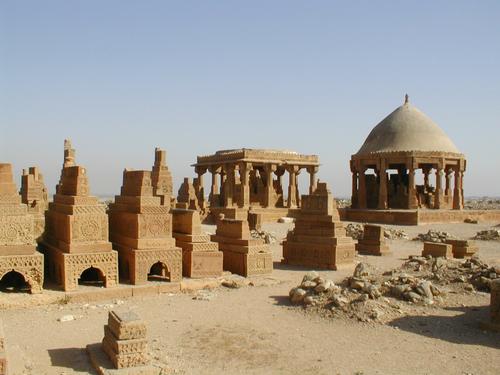 Karachi Chowkandi CemeteryPhoto: Mwaqas at English Wikipedia CC3.0 Unported no changes made
Karachi Chowkandi CemeteryPhoto: Mwaqas at English Wikipedia CC3.0 Unported no changes made
The Chowkandi cemetery is famous for its hundred-year-old graves. Most of the historical buildings in the city were built during the British rule: the Karachi Port Trust, the Sindh High Court, the KMC Headquarters, the Empress Market, St Patrick's Church, the Mohatta Palace and the Karachi Railway Station.
Tips
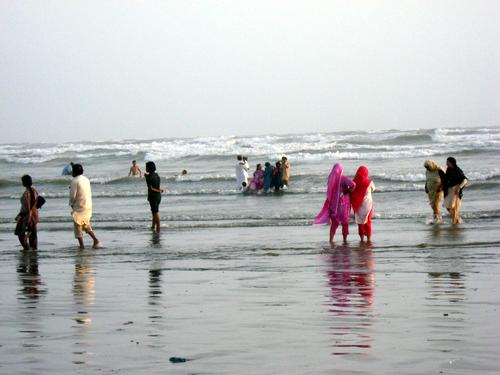 Beach KarachiPhoto: Public Domain
Beach KarachiPhoto: Public Domain
There are beautiful beaches in the vicinity of the city: Seaview, Manora Island, Sandspit Beach, Hawke's Bay Beach, Paradise Point, Frans Beach, Cape Monze, and Nathiagali Beach.
The Kirthar National Park is located 60 kilometres from Karachi. In this park you can see striped hyenas, wolves, Indian gazelles and wild goats. Hub Lake is located 50 kilometres from Karachi near the Kirthar National Park. It is an ideal place for bird watching, swimming and fishing.
Useful links Karachi
BBC Country ProfilesWorld Fact Book Explore all Countries
How to call
Last updated June 2025
Copyright: Team - The World of Info